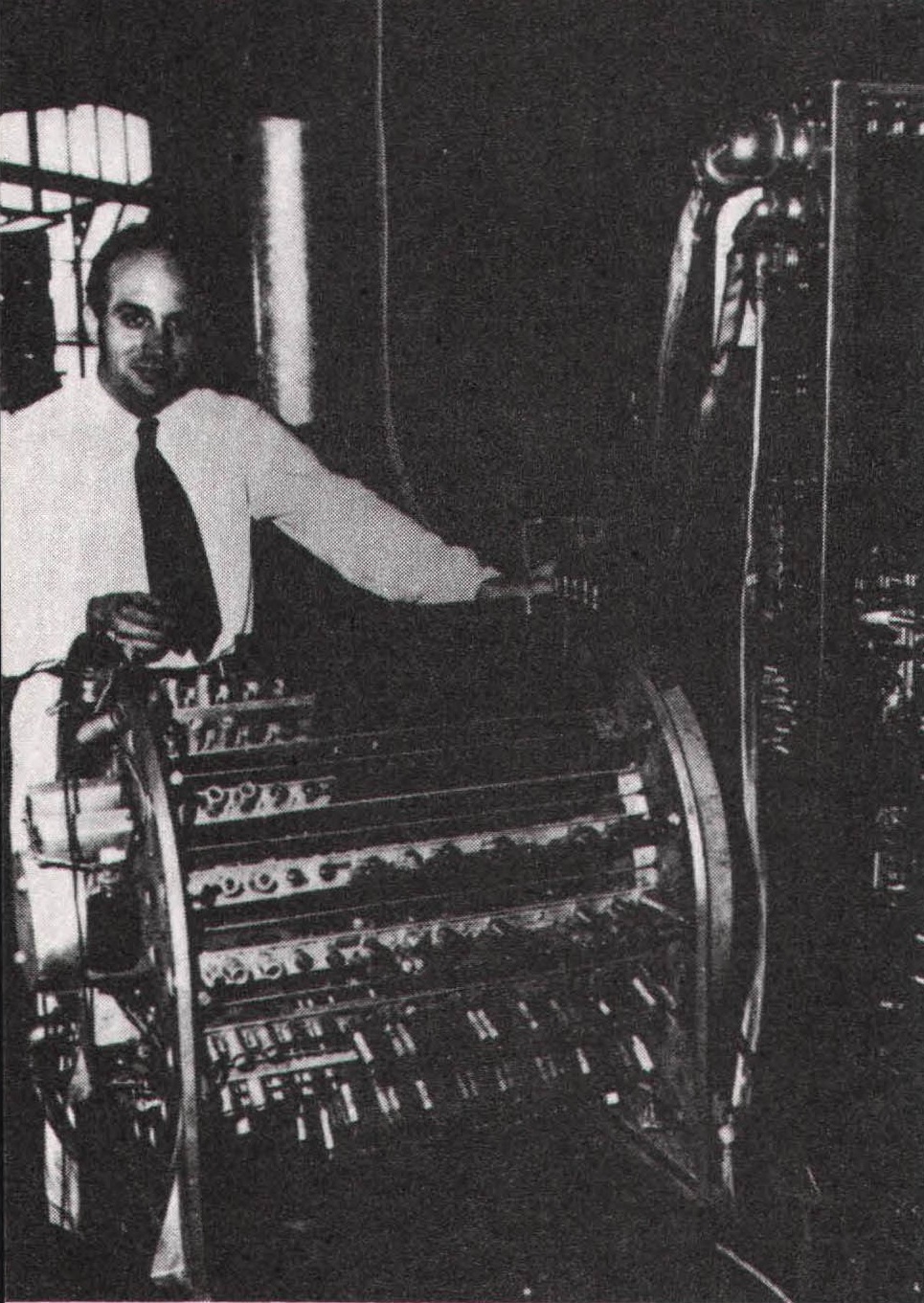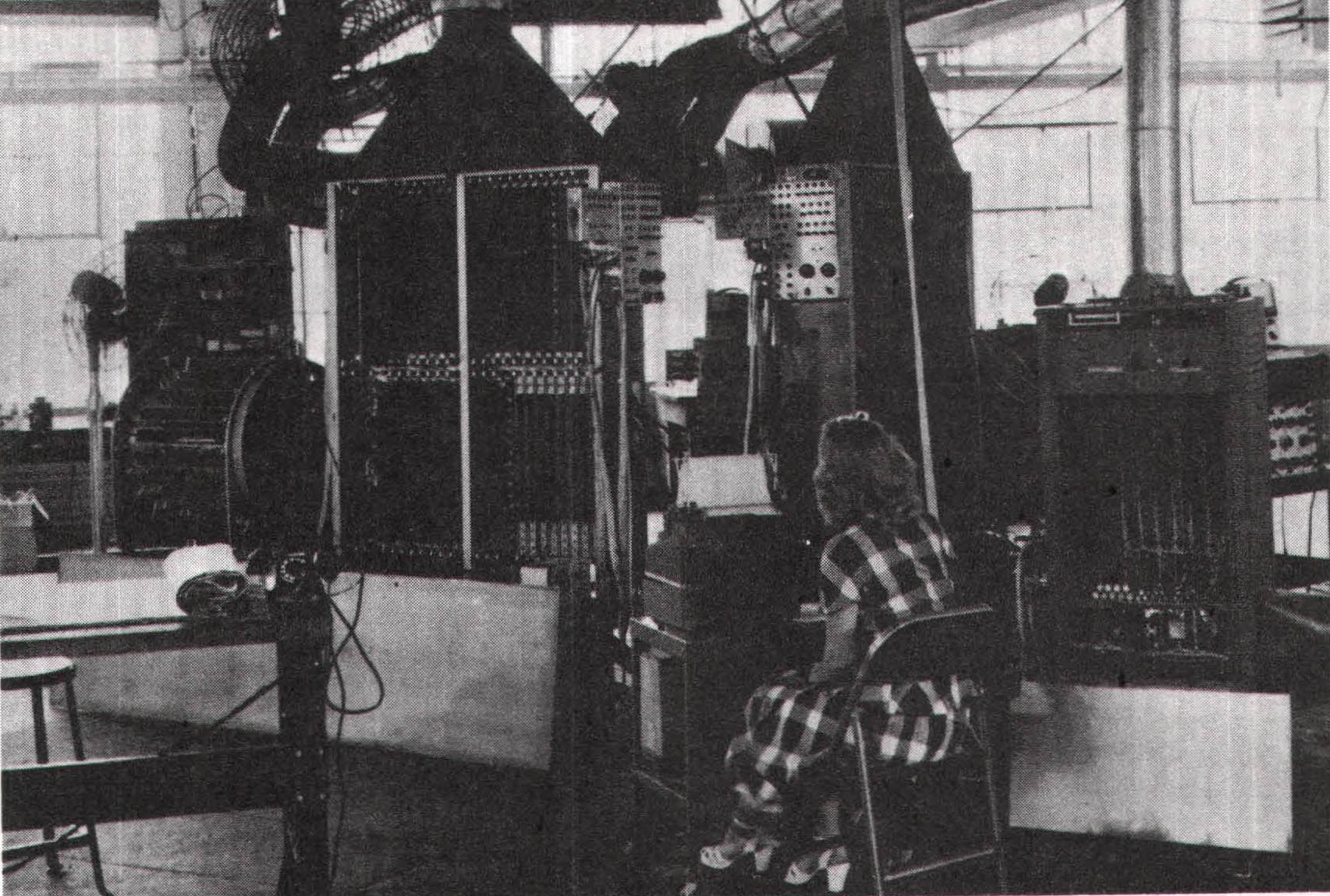And what was Eckert and Mauchly’s “foolishness”? It was a belief in the commercial potential of computers and a proposal for an extraordinary machine known as UNIVAC, or Universal Automatic Computer. UNIVAC was not so much a computer as a computer system, a family of related machines that enabled customers to put together a data-processing system that suited their needs. There were high-speed printers, magnetic tape drives (for external memory), card-to-tape converters, tape-to-card converters, high-speed tape copiers, and other equipment. In other words, UNIVAC included everything you needed to haul your paper-laden accounting department, factory, government agency, or university into the twentieth century. And it was a truly general-purpose computer, able to process both numeric and alphabetic data. It could print bills, sort accounts, and predict elections as well as solve the kind of scientific problems that led to the invention of computers in the first place.
UNIVAC was a visionary idea, and like most visionary ideas it was brought to life only after years of agonizing labor that, on more than one occasion, nearly cast its inventors into a red sea of bankruptcy. Yet, despite the derogatory opinions of Aiken and other scientists and engineers, who tended to see nothing but greed in Eckert and Mauchly’s ambitions, UNIVAC turned out to be an enormous commercial success, and it was these two men who really inaugurated the American computer industry and introduced computers into the marketplace. Most companies, particularly IBM, didn’t take these machines seriously until Eckert and Mauchly had proved that there was indeed a sizable market for computers even at several hundred thousand dollars apiece. Then everyone wanted to get into the act.
Eckert and Mauchly’s first problem was raising the money to develop UNIVAC. Fortunately, the government was keenly interested in fostering a domestic computer industry, and the Census Bureau was willing to foot most of the research and development cost. As the country’s chief statistical agency, the Census had a compelling need for computers and a tradition of technological sponsorship dating back to Seaton and Hollerith. However, it was legally prohibited from granting research and development contracts, and its deal with Eckert and Mauchly had to be handled by the National Bureau of Standards, a sister agency at the Commerce Department that suffered from no such legal encumbrances. The NBS was glad to cooperate, and in October 1946, Eckert and Mauchly signed their first contract. They formed a partnership, the Electronic Control Company, rented office space in a building in downtown Philadelphia, and hired half a dozen engineers.
Unfortunately, there were serious problems from the start. They were so eager for that contract – the first contract is always the most important – that they were willing to accept almost any price. Although they knew it would cost at least $400,000 to develop UNIVAC, they agreed to a $300,000 fixed-fee contract instead of a cost-plus-fixed-fee agreement, which would have given them the right to pass on the unforeseen but legitimate expenses to the government. A cost-plus-fixed-fee agreement was a common deal in Washington, but Eckert and Mauchly believed, incorrectly, that such a contract gave the NBS certain patent rights, and this time they were determined to keep all the rights to themselves. Naively optimistic, they hoped to spread their development costs among future UNIVAC sales, yet their desperate need for capital led them to offer UNIVACS for ridiculously low prices.
Although the $300,000 fixed-fee contract was their fault, another part of the deal was not. Adhering to bureaucratic formalities, the NBS had hired a consultant to evaluate the UNIVAC proposal- and that consultant was George Stibitz of Bell Labs. Stibitz, who had frowned on the BRL’s decision to finance ENIAC he had thought the money would have been better spent on tried-and-true relay computers – was equally unenthusiastic about UNIVAC. “I find it difficult to say much about the Mauchly-Eckert proposal,” he wrote the NBS in May 1946, while the UNIVAC negotiations were underway. “There are so many things undecided that I do not think a contract should be let for the whole job.” He was right, of course; most things were undecided, but the ENIAC project had started the same way, Overly cautious, Stibitz recommended that the NBS give Eckert and Mauchly a three-part contract, first to conduct further studies, then to work up a detailed proposal, and finally to build the computer.
The NBS, however, decided to divide the contract into two parts, one for the development of the computer’s internal and external memory, the other for the development of the processor. In October, Eckert and Mauchly received $75,000 for the construction of a mercury delay line and a magnetic tape drive. According to Eckert and Mauchly’s estimate, the project was supposed to take six months, and the size of the payment was keyed to their assessment of their costs and schedule. Unfortunately, they ran into many technical problems, and the equipment wasn’t finished until October 1947 – six months late. And that meant that the second part of the contract, $169,600 for the design and development of the rest of the computer, wasn’t executed until June 1948. (NBS retained 15 percent of the $300,000 as an overhead fee to cover the administrative costs of the contract.)
So, between October 1946 and June 1948, Eckert and Mauchly received only $75,000 from the government. They tried to drum up other contracts, only to run into a wall of skepticism. Once again, the major obstacle was the unenthusiastic assessments of their colleagues. In 1947, the NBS asked the National Research Council, part of the National Academy of Sciences, to evaluate UNIVAC and two other government computer projects (EDVAC and a computer being built by Raytheon, the large Massachusetts electronics manufacturer). The council appointed a committee that, among others, consisted of von Neumann, Stibitz, and Aiken. These men were predisposed against Eckert and Mauchly’s plans, either for technical reasons (Aiken and Stibitz) or for personal and technical reasons (von Neumann). Instead of helping Eckert and Mauchly, the committee’s lukewarm report ignored most of the technical issues raised by UNIVAC, such as whether Eckert and Mauchly’s decision to stick with serial processing and the decimal system was a wise one, and some government agencies shied away from UNIVAC.

Since the federal government wasn’t a good bet, Mauchly, who ran the business side of the partnership, turned to private industry. The Northrop Aircraft Company, which was developing a long-range guided missile for the Air Force, was intrigued by the idea of airborne navigation by computer. It wanted a small computer to test the feasibility of the idea and, in October 1947 about the time Eckert and Mauchly satisfied the first part of the NBS deal- it gave them a $100,000 contract for the construction of a small numeric computer called BINAC, or Binary Automatic Computer. (BINAC wasn’t supposed to operate in flight; rather, it was intended to be the first step in the development of a computer that could. At the time, the thought of such a device was utterly impractical, and reliable airborne computers had to await the invention of miniature solid-state components.) Although BINAC would divert the Electronic Control Company’s attention from UNIVAC, Northrop was willing to pay $80,000 up front.

Once again, Mauchly and Eckert underestimated their costs and development schedule. Completed in August 1949, BINAC was fifteen months behind schedule and $178,000 over budget – a loss that Eckert and Mauchly had to absorb. Moreover, Northrop didn’t even get what it paid for. Subordinated to UNIVAC from the beginning, BINAC had failed to receive Eckert’s full attention, and he and his engineers had cut corners with inferior and untested parts; according to Northrop, about 25 percent of BINAC’s tubes were unsatisfactory and had to be replaced. There were many other technical problems, and BINAC – the first electronic stored-program computer in America – didn’t run to Northrop’s satisfaction. “BINAC seemed to operate well on sunny days,” said one of the company’s engineers, Florence R. Anderson, “but poorly on rainy days.”

However, the machine was not without its saving graces. It was not one computer but two, with a pair of serial processors that were geared to run in tandem. If one of the processors failed, the other would kick in immediately – an essential safety net for an airplane. (Or a spacecraft; NASA’s space shuttle uses five tandem computers. Many military units, government agencies, and businesses, particularly airlines and banks, also use such computers.) A fraction the size of ENIAC, each processor was a mere five feet tall, four feet long, and one foot wide, and contained 700 tubes. Each unit could perform 3,500 additions a second (compared to ENIAC’s 5,000) and 1,000 multiplications a second (more than ENIAC’s 333). And each processor had a sizable mercury delay line memory that could store 512 31-bit words.